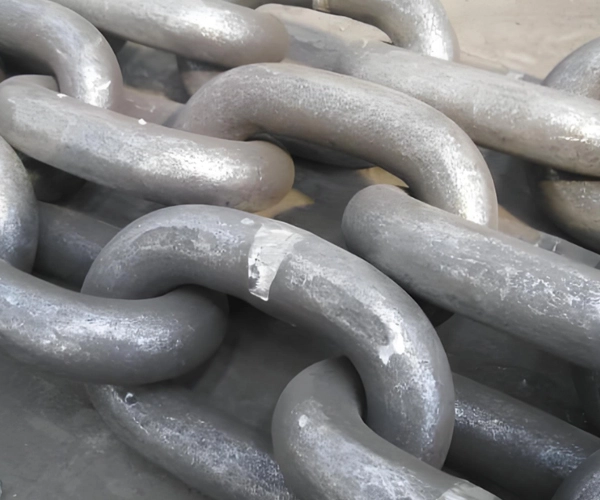When it comes to anchoring large ships, it's not just about the anchor—it's also about the chain that connects the anchor to the vessel. You might have heard of two types: the stud chain and the studless chain. At first glance, they may seem similar, but there are some important differences that affect how they're used at sea.

So what is the difference between a stud chain and a studless chain? Let's break it down in simple terms—plus explore why choosing the right type of chain matters more than you might think.
A stud chain, also known as a stud-link chain, is a heavy-duty anchor chain that includes a solid bar (called a "stud") across the center of each link.
A crossbar (stud) connects the two sides of each chain link
Commonly made from steel for high strength
Prevents the chain from deforming under heavy loads
The stud adds strength and keeps the chain from twisting or stretching unevenly. It also prevents the chain from tangling, which is especially important when dealing with the massive forces involved in anchoring a large ship.
Commercial vessels
Offshore platforms
Naval ships
High strength-to-weight ratio
Less deformation under stress
Resists knotting and tangling
Long-lasting even under extreme loads
A studless chain is exactly what it sounds like—it's a chain where each link is hollow and doesn't have a central stud connecting the sides.
No center stud in each link
Links are smooth and typically larger in size than stud chain links
Slightly more flexible
Studless chains are lighter and more flexible, making them easier to handle, especially in shallow-water operations or smaller mooring systems. They're ideal for setups that don't need the extreme strength of a stud-link chain.
Smaller vessels
Temporary moorings
Floating structures like buoys
Lightweight and easy to handle
Lower manufacturing cost
Suitable for light to moderate mooring loads
| Feature | Stud Chain | Studless Chain |
Center stud in links | Yes | No |
Weight | Heavier | Lighter |
Strength | Higher load capacity | Moderate load capacity |
Flexibility | Less flexible | More flexible |
Knot resistance | High (less tangling) | Moderate |
Common use | Heavy-duty anchoring | Light mooring and offshore buoyancy |
Durability | High | Moderate |
Cost | Higher | Lower |
Choosing between a stud chain and a studless chain depends on several key factors:
You're anchoring a large ship
You're dealing with rough seas or deep water
You need maximum holding strength
Tangle-free operation is critical
You're anchoring a small to medium vessel
You need lightweight gear
You're handling temporary moorings or buoys
Cost and flexibility are more important than ultimate strength
Although studless chains aren't typically used on massive container ships, they're extremely useful in other areas of the marine industry:
Floating docks and pontoons
Mooring small fishing boats
Temporary offshore platforms
Buoy anchoring systems
In these environments, a studless chain offers just the right balance of strength, flexibility, and ease of use.
Both types of chains are typically made from galvanized or high-strength steel, but how they respond to long-term stress and corrosion can differ.
Stud chains tend to wear more evenly and maintain shape under pressure
Studless chains may twist more easily, which can increase wear at the contact points
In harsh marine environments, stud chains usually last longer—but proper inspection and maintenance are key for either type.
No matter which chain type you're using, here are a few best practices:
Regular inspection for corrosion, wear, or cracks
Lubrication (where applicable) to prevent binding
Avoid sharp bends that can deform studless chains
Check link diameter against original specs for thinning
When it comes to stud chain vs. studless chain, there's no one-size-fits-all answer. It all depends on your anchoring needs, vessel size, operating environment, and budget.
Choose a stud chain if you need top-tier strength, durability, and tangle resistance for large vessels.
Choose a studless chain if you want something lighter, more flexible, and cost-effective for smaller marine operations.
And remember—no matter what chain you choose, proper handling, storage, and maintenance will keep your gear strong and seaworthy for the long haul.